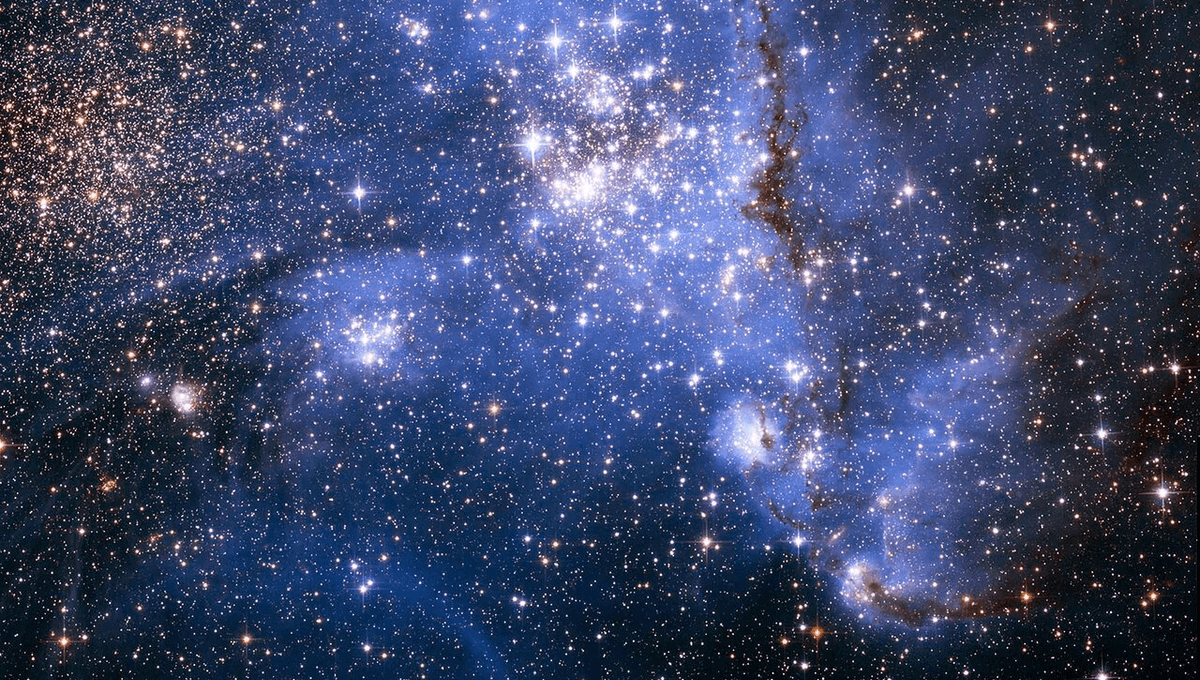
Magnetic fields have been detected in very large stars in the Large and Small Magellanic Clouds, the first time this has been achieved for stars outside our galaxy. It is hoped the discoveries in metal-poor regions will help us understand the processes involved, given their outsized influence.
The Sun has a magnetic field, and when this gets twisted it can lead to sunspots, whose effects the world experienced in marvelous color this month. A minority of stars have much more powerful magnetic fields. Where these stars are massive enough to end their lives as neutron stars, they can turn into magnetars, which are thought to be the sources of long-duration gamma-ray bursts, rare types of supernovae, and other poorly understood phenomena.
Our understanding of why some stars have such hyper-powerful fields is poor however, partly because we can’t see as many as we would like at crucial stages of their lives. There are suspicions that strong magnetic fields are the consequence of binary stars merging or engaging in mass transfers, but this is not yet proven.
So far, we have failed to detect any highly magnetic galactic stars with low metal content. This may mean that low-metal stars are less likely to be highly magnetized, but it could also be a coincidence from small samples. The question is important, because low-metal massive stars are the closest study labs we get to the early universe. Attempts to expand our sample of such magnetic stars outside the galaxy have failed, until now.
We can’t directly see magnetic fields in space, but we detect them through polarized light. Magnetic fields cause light emitted within them to become polarized, instead of having random orientations like most light from space, and this can be observed through what is known as spectropolarimetry.
“The method is extremely hungry for photons. This is a special challenge because even the brightest massive stars, which have more than eight solar masses, are relatively light-poor when observed in our neighboring galaxies,” said Dr Silva Järvinen of the Leibniz Institute of Astrophysics Potsdam in a statement.
It’s just as well then that the world is in a golden age of giant telescope construction. Järvinen is part of a team that used one of the four 8-meter (26-foot) components of the European Southern Observatory’s Very Large Telescope to collect the light required from such distant stars.
It’s a process that can lead to null results for many reasons. Some stars may be magnetized, but not quite enough to be detected at this distance. Moreover, the longitudinal magnetic field the team sought is a dipole strongest near the magnetic poles and zero at the magnetic equator. With the magnetic axis randomly aligned toward Earth, some of the stars studied will inevitably be seen from the wrong angle, making it impossible to detect signs of magnetism.
Where the magnetic field is at the edge of detectability the chances can be improved by studying more spectral lines over a wider range of wavelengths. Longer exposure times also help.
Järvinen and co-authors sampled four rare Of?p stars, two in each of the Magellanic Clouds, where metal concentrations are generally much lower than in the Milky Way. Only five Of?p stars, distinguished by their immense mass and unusually bright C III spectral line at 4650 Å, have been found in our entire galaxy, all highly magnetized. However, they seem to be more common in our smaller companion galaxies. They also studied a binary system whose giant stars are so close they’re touching.
The team detected magnetic fields in two Of?p stars, as well as in the contact binary. The findings tend to suggest extreme magnetism is not so rare for giant stars in low-metal environments, increasing the chance of extreme events in the early universe.
The study is open access in Astronomy and Astrophysics.
Source Link: Massive Magnetic Stars Detected Outside The Milky Way For The First Time